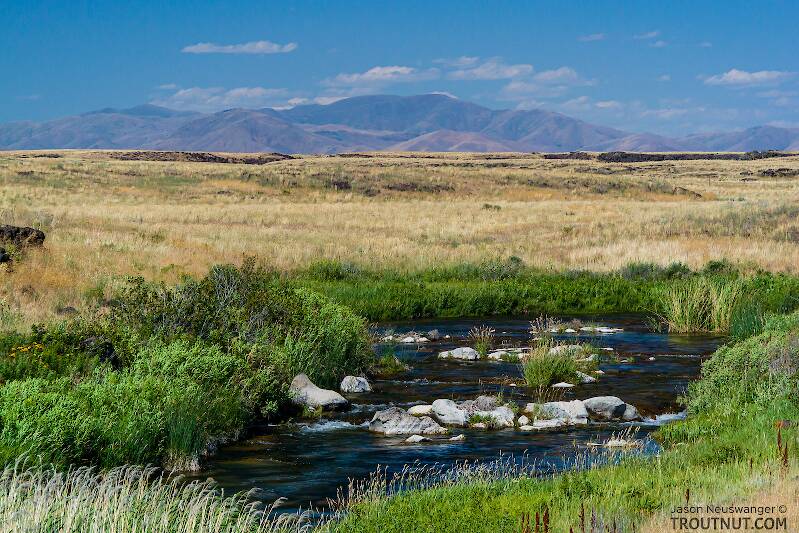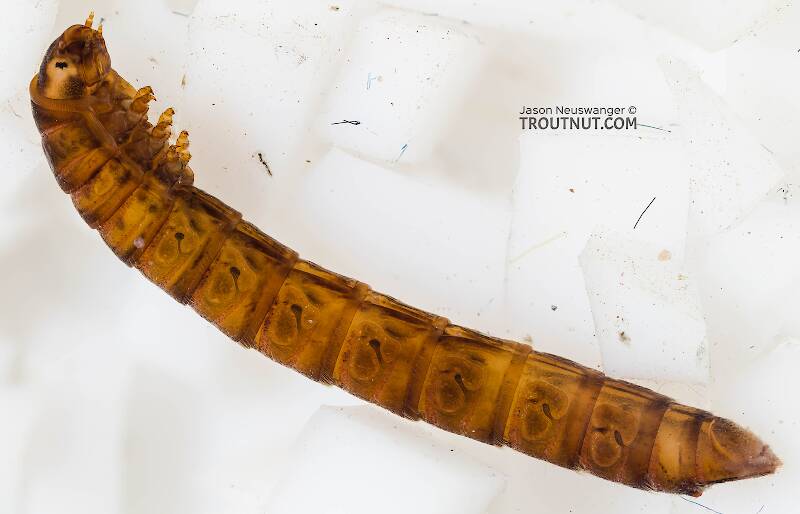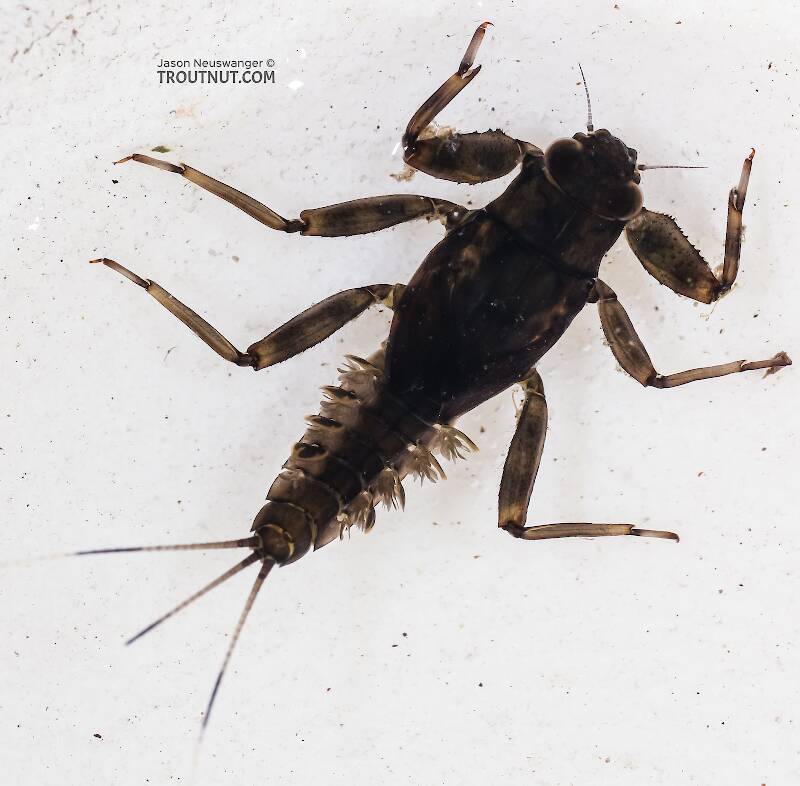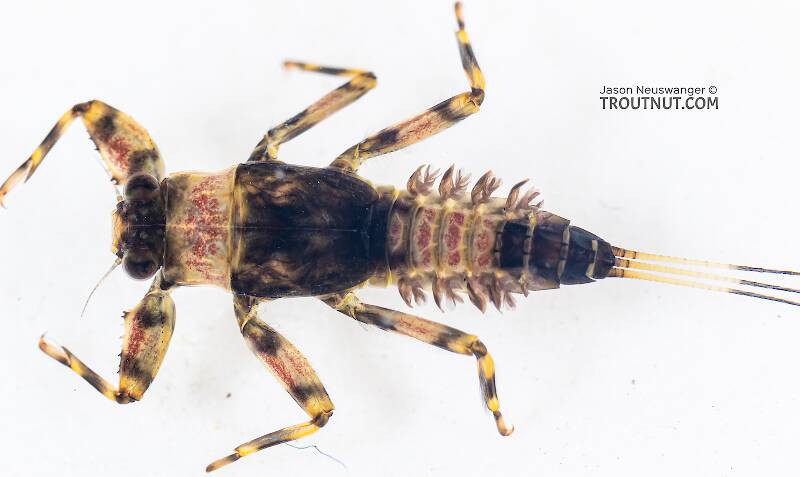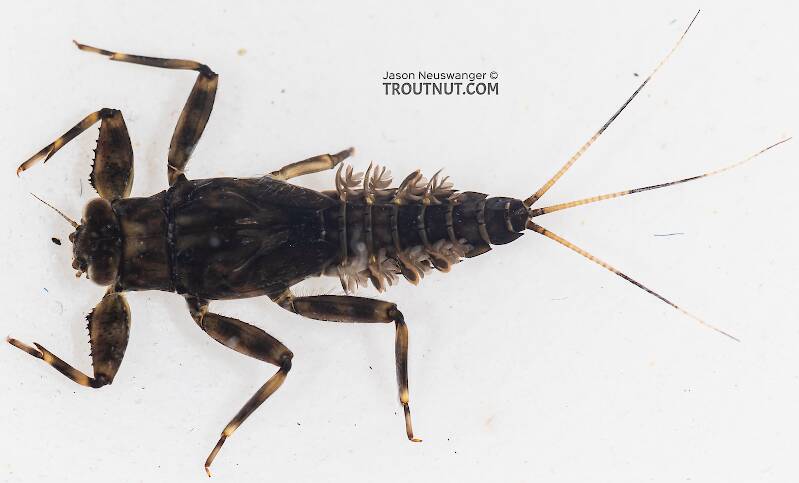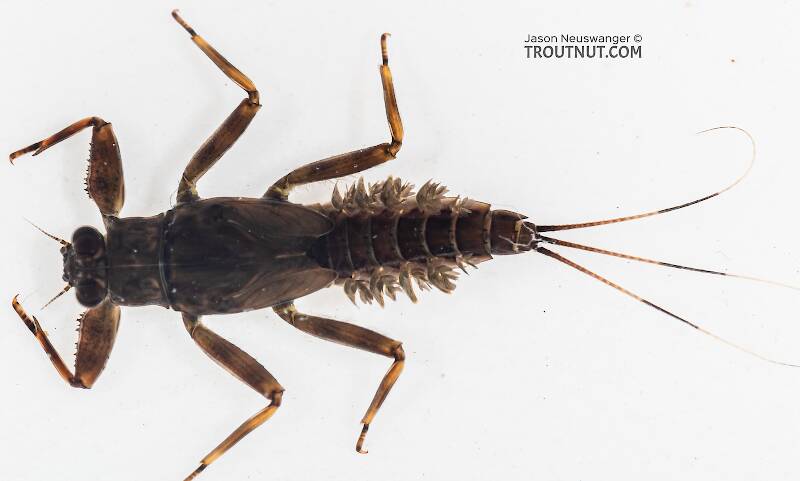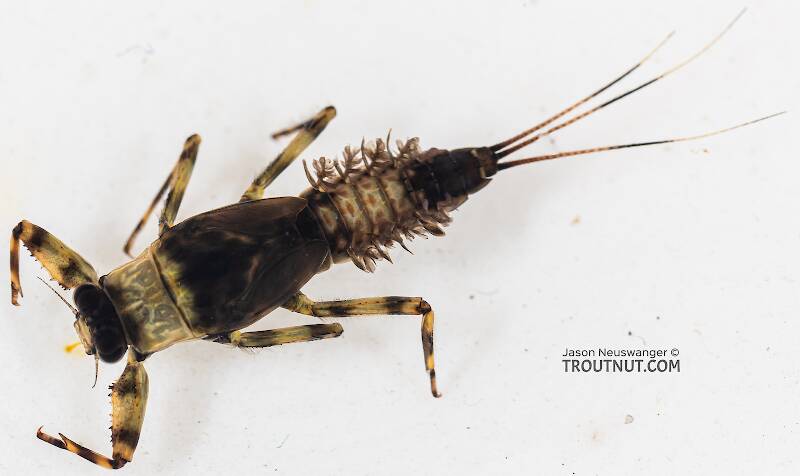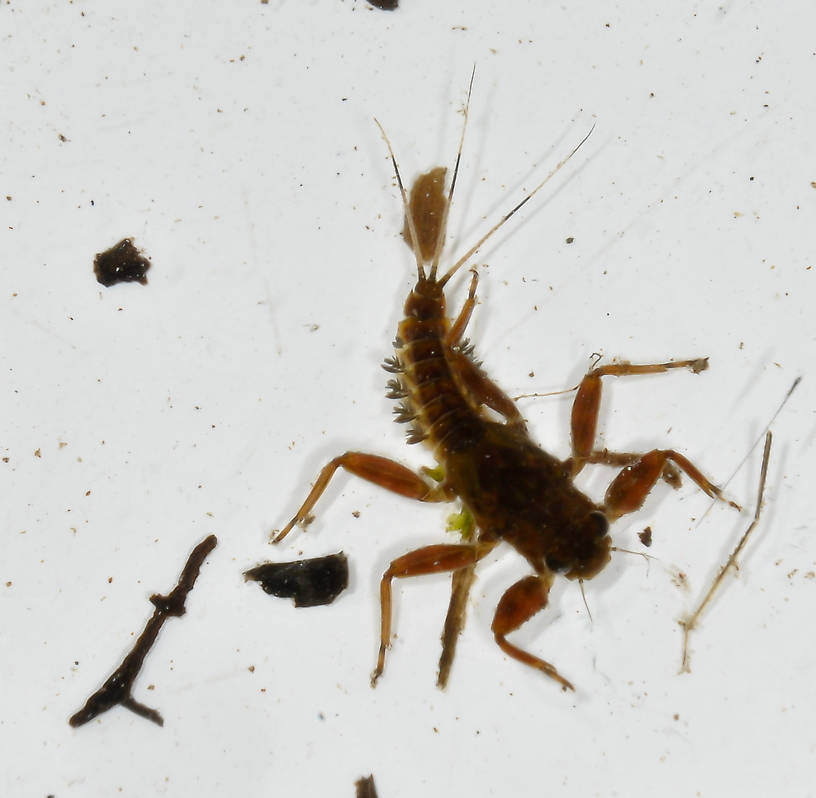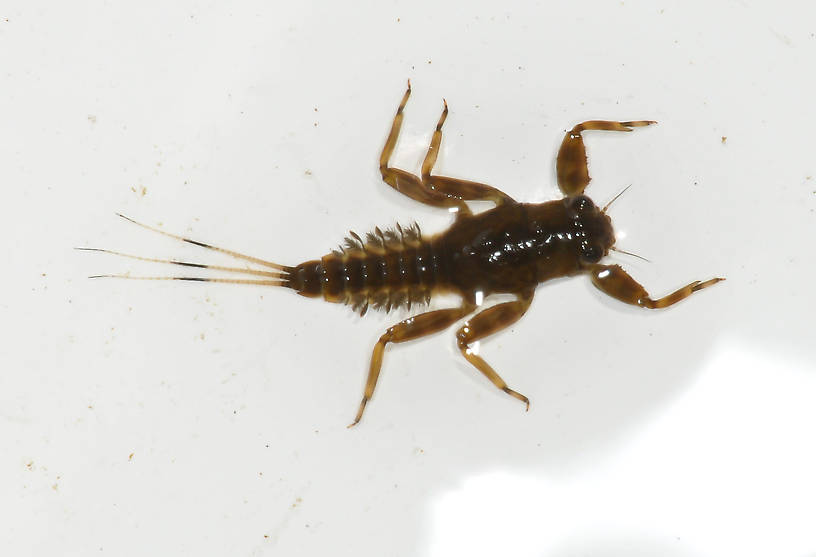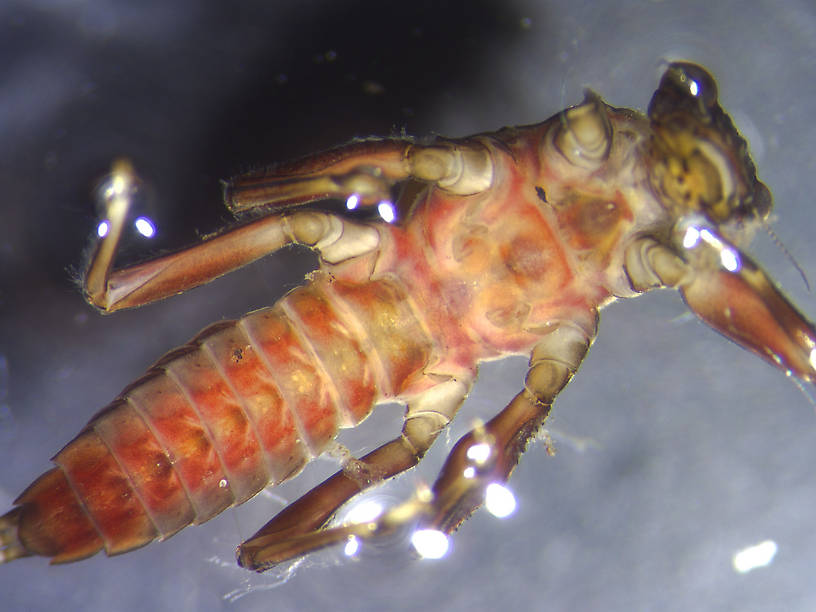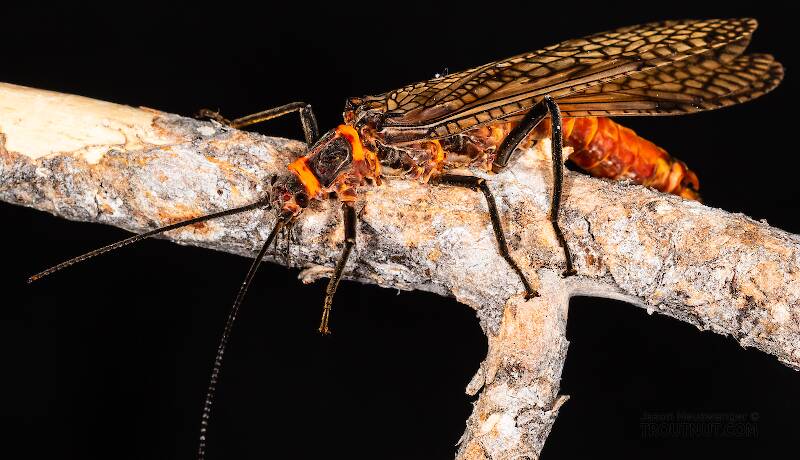
Salmonflies
Pteronarcys californica
The giant Salmonflies of the Western mountains are legendary for their proclivity to elicit consistent dry-fly action and ferocious strikes.
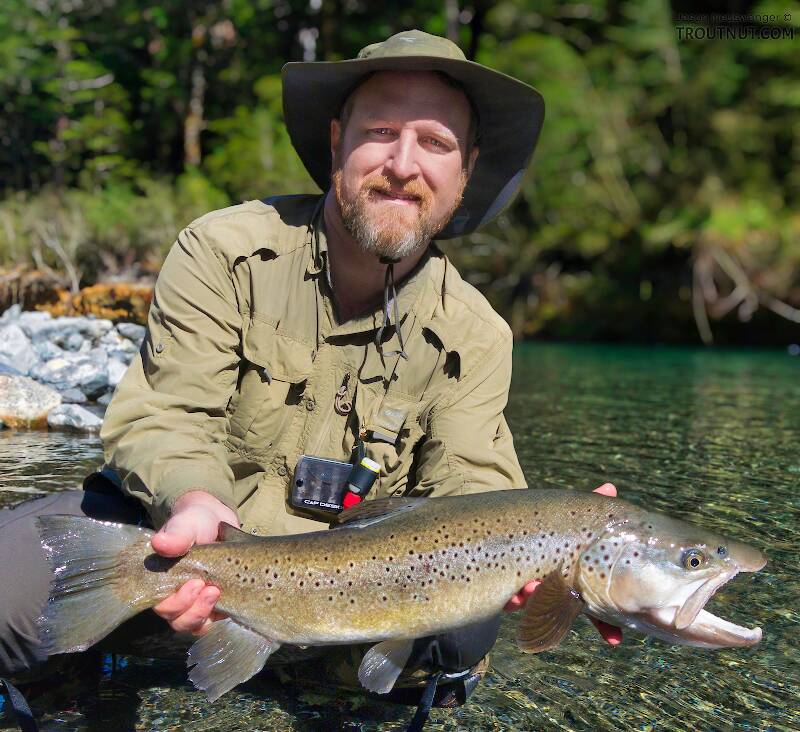
Mayfly Species Drunella coloradensis (Small Western Green Drakes)
Where & when
According to Fred Arbona, this species requires streams which never exceed 60°F, and this limits them to small streams at high altitude.In 13 records from GBIF, adults of this species have been collected during September (38%), August (31%), October (8%), June (8%), July (8%), and April (8%).
In 41 records from GBIF, this species has been collected at elevations ranging from 171 to 10984 ft, with an average (median) of 8196 ft.
Species Range
Identification
To determine whether a specimen of Drunella belongs to Drunella coloradensis, use the Key to Species of Drunella Nymphs.
Physical description
Most physical descriptions on Troutnut are direct or slightly edited quotes from the original scientific sources describing or updating the species, although there may be errors in copying them to this website. Such descriptions aren't always definitive, because species often turn out to be more variable than the original describers observed. In some cases, only a single specimen was described! However, they are useful starting points.
Male Spinner
Wing length: 12 mm
A species of the fuscata group (now a synonym of Drunella walkeri); closely allied to E. flavilinea (now a synonym of Drunella flavilinea), from which the imago may be distinguished by the dark venation and the straighter second forceps joint, which is not swollen apically.
Imago dark brown, without striking color markings. Thorax dark brown. Venation dark purplish brown. Abdomen rather uniform dark brown; pleural fold pale; margins of segments pale, appearing as light bands when the body is extended. Tails dark brown, deeper brown at the base. Apical margin of forceps base almost straight between the bases of the forceps limbs. Second joint of forceps moderately and regularly curved, not noticeably swollen near the apex; somewhat thinner near the middle than elsewhere.
Nymph
Nymph with very low occipital tubercles; tibial ‘thumb’ longer and sharper at the tip than in flavilinea(now a synonym of Drunella flavilinea) ; middle and hind legs relatively more slender; dorsal spines more prominent.
Nymph without frontal horns or frontal shelf. Head roughened; occipital tubercles present, but very low and inconspicuous. No thoracic spines. Anterior margin of the fore femur with teeth or spines. Tibial ‘thumb’ quite long, sharp-pointed, relatively straight. Legs stout, but relatively more slender than in flavilinea; all femora somewhat flattened, the posterior margins with many hairs and a few short spines. Gills borne on segments 3-7. Dorsal spines present on tergites 1-9, somewhat longer on tergites 6-8 than on the basal segments. General color light brown, mottled with paler areas, especially on the legs. Tails each with two dark and two paler bands.
Specimens of the Mayfly Species Drunella coloradensis
1 Male Dun
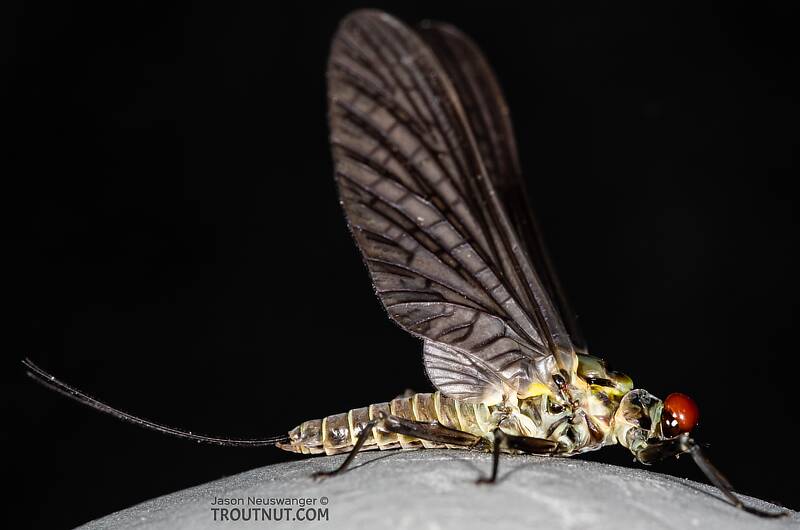
1 Male Spinner
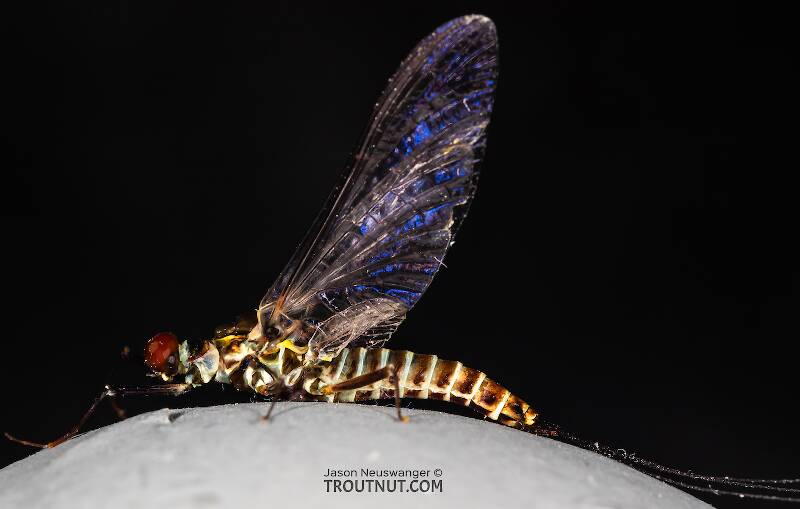
8 Nymphs
Start a Discussion of Drunella coloradensis
References
- Arbona, Fred Jr. 1989. Mayflies, the Angler, and the Trout. Nick Lyons Books.
- Knopp, Malcolm and Robert Cormier. 1997. Mayflies: An Angler's Study of Trout Water Ephemeroptera . The Lyons Press.
- Needham, James G., Jay R. Traver, and Yin-Chi Hsu. 1935. The Biology of Mayflies. Comstock Publishing Company, Inc.
Mayfly Species Drunella coloradensis (Small Western Green Drakes)
Species Range
Common Names
Resources
- NatureServe
- Integrated Taxonomic Information System
- Global Biodiversity Information Facility
- Described by Dodds (1923)

